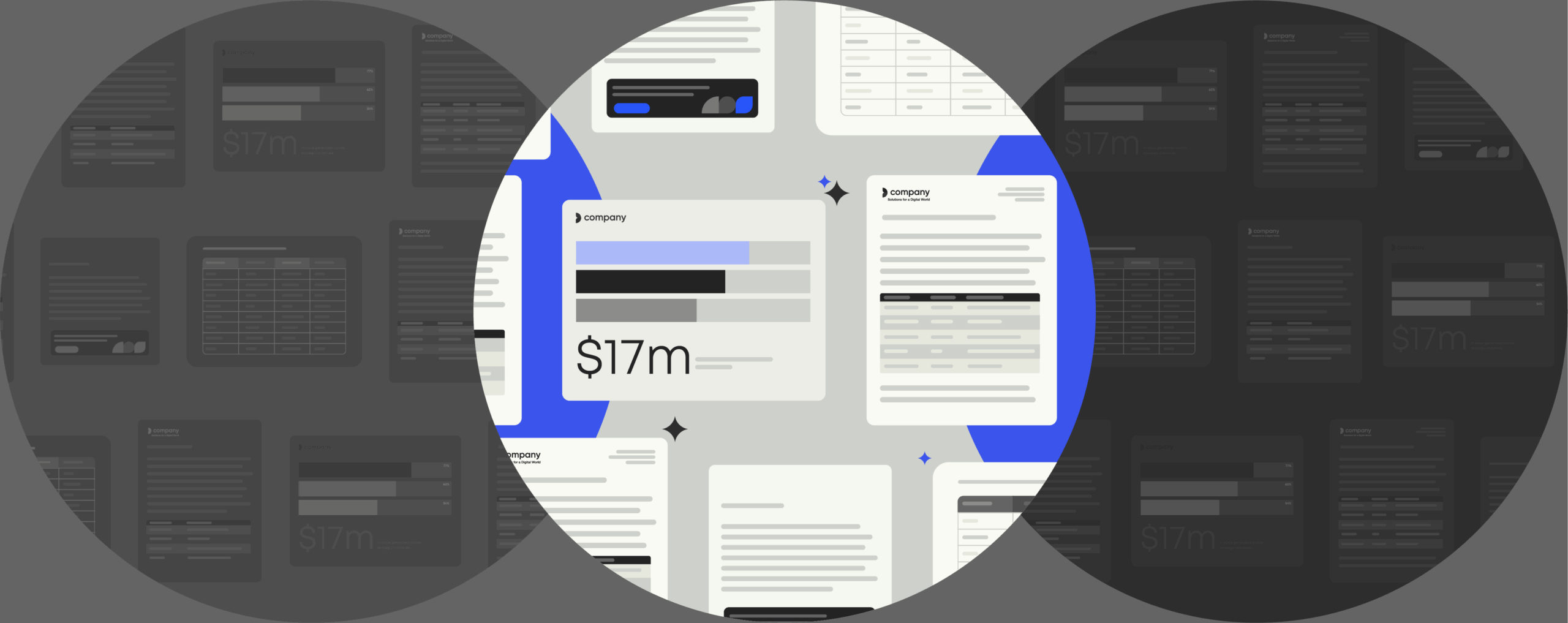The 5 steps to better proposals

Creating new business documents can be a traumatic experience. Luckily, technology is catching up with demand, and there is a light at the end of the tunnel.
Every week, the average employee spends 15 hours creating business content.
Ranging from reports to contracts to proposals, each of these documents represents a significant investment of time and effort. And 78% of workers agree that good content is the number one most important driver of business success.
So then why is building these documents so hard?
The pace of the work we do, and the diverse technology we use, has outstripped our ability to properly oversee the content we are creating. Creating documents has become fragmented, stuck in a manual process, slowed down by extensive reviews, leading to a frustrating employee experience and costly mistakes.
We’ve charted the standard proposal creation process today — and where the current road bumps lie — to help you regain control of this critical aspect of work.
Crack the code to better proposals
How leading enterprises cracked the code to increase document efficiency and quality
Step 1: Ideation
All documents start with a need. They grow the business in one way or another, and they require a range of different elements to be successful.
For many people, creating a proposal is so routine it’s easy to ignore how challenging it can be to build them in the first place.
52% of workers said that their colleagues constantly complain about the content creation process
But for many workers, collecting the necessary information — logos and imagery, stats and boilerplate, disclaimers, and product descriptions — is a painful processthat distracts them from more important work.
Step 2: Creation
To actually build the content needed, employees have a few options depending on the technology available to them.
They can create the document from scratch, collecting all the necessary information and assets and customizing the document to their needs.
For highly specialized content, this may be necessary, but this level of individual effort lacks efficiency and has a high risk of incorporating outdated material — especially as 69% of workers admit to using Google to search for a company image or logo to insert into content. In fact, only 27% say they use company-approved assets when creating content.
74% say they routinely use four or more applications to create and compile content
Employees can also use a template — or perhaps an earlier version of a similar document — and simply replace the relevant sections. This saves time, but also runs the risk of including old information.
In both cases, employees often have to switch between multiple programs to find and edit materials, build documents, and export and send them.
Step 3: Revision
Once a draft is ready, it’s time for reviews and (hopefully) approvals.
For many companies, this is a manual process in which a manager (or managers) or a brand expert (or experts) looks over the material and gives feedback.
Of course, with this many cooks in the kitchen, the broth can easily spoil.
60% say their company’s processes for approving content delay other work
This lengthy review process reduces efficiency and causes delays — as multiple stakeholders perform their edits — and unfortunately, it’s no guarantee that a document will be free from mistakes.
Step 4: Distribution
For better or for worse, once the proposal is approved, it’s time to deliver it to its final destination.
And we’ve all had this experience: we save a document, package it for sending, email it to a prospect and then immediately notice a mistake.
94% say they find mistakes and errors in content after it’s already been approved
In many cases, this is a harmless oversight like an old logo or outdated company description. But sometimes these mistakes can be costly: incorrect pricing or old terms in a contract can have serious financial and legal consequences.
Just as costly: embarrassing typos or inconsistent brand representation can cost you a sale.
Step 5: Replication
After the proposal has been created, reviewed, and distributed, it usually sits in a folder or shared server, both for record keeping as well as an example of previous work.
It is at this point that any errors in those documents have the biggest danger of negatively impacting the business.
62% say their team wastes time recreating content that likely already exists somewhere in the organizations
If we go back to step two, earlier proposals are often used as templates for new ones. So when a document is built flawed, those errors risk being copied into new documents, leading to exponentially more mistakes.
Taming Document Anarchy
Mismanaging document creation is not just an issue for overly-concerned brand or legal teams.
In fact, 84% of workers agree that outdated content can harm sales.
Corporate success today depends on the quality of the business content it creates — and that depends on the utility and efficiency of its technology and work processes.
Almost half (47%) of workers estimate that if content bottlenecks were eliminated, their company’s revenue would grow by more than 20%.
The answer, then, is to invest in the tools needed to improve both the efficiency of document generation as well as the quality of the output.
*All data comes from our 2022 Content is Everything report, which surveyed 2,000+ global workers between December 2021 and January 2022 to learn how companies are reacting to massive shifts in content creation, distribution, and compliance.



